A crossword with clues for both 2D and 3D shapes.
Use this crossword to review the various shapes and their properties.
The solutions are provided on the second page.
Updated: 20 Jun 2023
A crossword with clues for both 2D and 3D shapes.
Non-Editable: PDF
Pages: 2 Pages
Grades: 3 - 5
Understand that shapes in different categories (e.g., rhombuses, rectangles, and others) may share attributes (e.g., having four sides), and that the shared attributes can define a larger category (e.g., quadrilaterals). Recognize rhombuses, rectangl...
Classify two-dimensional figures based on the presence or absence of parallel or perpendicular lines, or the presence or absence of angles of a specified size. Recognize right triangles as a category, and identify right triangles.
Understand that attributes belonging to a category of two-dimensional figures also belong to all subcategories of that category. For example, all rectangles have four right angles and squares are rectangles, so all squares have four right angles.
Classify two-dimensional figures in a hierarchy based on properties.
Classify and sort two- and three-dimensional figures, including cones, cylinders, spheres, triangular and rectangular prisms, and cubes, based on attributes using formal geometric language;
Use attributes to recognize rhombuses, parallelograms, trapezoids, rectangles, and squares as examples of quadrilaterals and draw examples of quadrilaterals that do not belong to any of these subcategories;
Classify two-dimensional figures based on the presence or absence of parallel or perpendicular lines or the presence or absence of angles of a specified size.
Geometry and measurement. The student applies mathematical process standards to classify two-dimensional figures by attributes and properties. The student is expected to classify two-dimensional figures in a hierarchy of sets and subsets ...
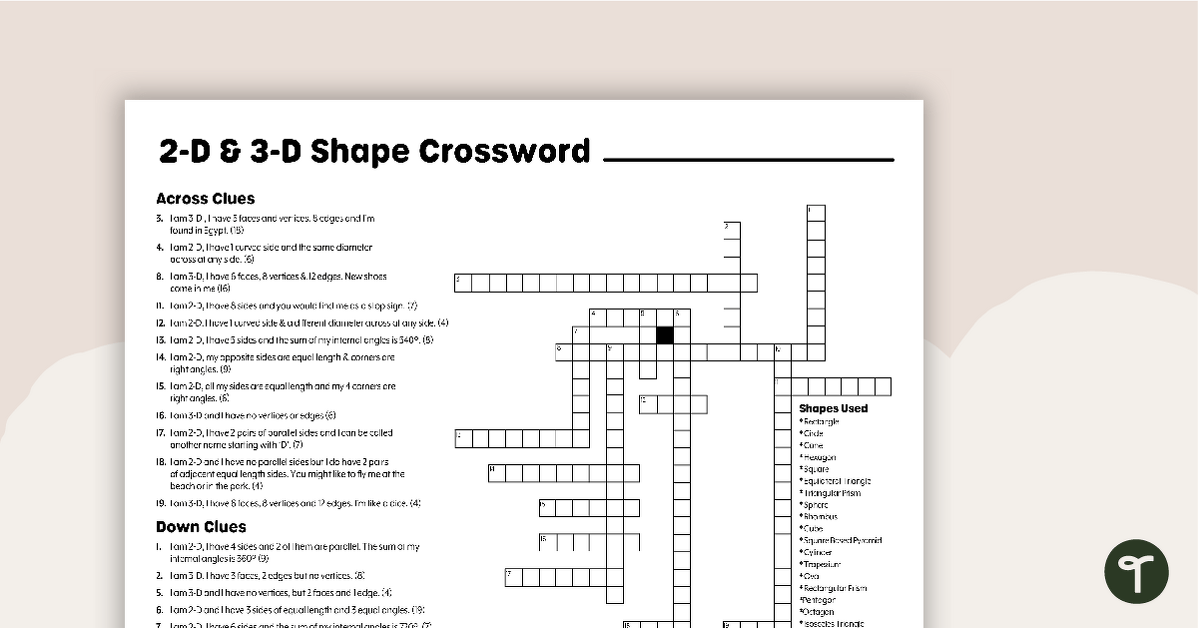

A crossword with clues for both 2D and 3D shapes.
Use this crossword to review the various shapes and their properties.
The solutions are provided on the second page.
Understand that shapes in different categories (e.g., rhombuses, rectangles, and others) may share attributes (e.g., having four sides), and that the shared attributes can define a larger category (e.g., quadrilaterals). Recognize rhombuses, rectangl...
Classify two-dimensional figures based on the presence or absence of parallel or perpendicular lines, or the presence or absence of angles of a specified size. Recognize right triangles as a category, and identify right triangles.
Understand that attributes belonging to a category of two-dimensional figures also belong to all subcategories of that category. For example, all rectangles have four right angles and squares are rectangles, so all squares have four right angles.
Classify two-dimensional figures in a hierarchy based on properties.
Classify and sort two- and three-dimensional figures, including cones, cylinders, spheres, triangular and rectangular prisms, and cubes, based on attributes using formal geometric language;
Use attributes to recognize rhombuses, parallelograms, trapezoids, rectangles, and squares as examples of quadrilaterals and draw examples of quadrilaterals that do not belong to any of these subcategories;
Classify two-dimensional figures based on the presence or absence of parallel or perpendicular lines or the presence or absence of angles of a specified size.
Geometry and measurement. The student applies mathematical process standards to classify two-dimensional figures by attributes and properties. The student is expected to classify two-dimensional figures in a hierarchy of sets and subsets ...

We create premium quality, downloadable teaching resources for primary/elementary school teachers that make classrooms buzz!
Would you like something changed or customised on this resource? While our team makes every effort to complete change suggestions, we can't guarantee that every change will be completed.
Did you spot an error on this resource? Please let us know and we will fix it shortly.
Are you having trouble downloading or viewing this resource? Please try the following steps:
If you are still having difficulty, please visit the Teach Starter Help Desk or contact us .

Play a whole-class game to review complementary and supplementary angles.

Teach your students to identify and calculate complementary angles with this one-page maths worksheet.
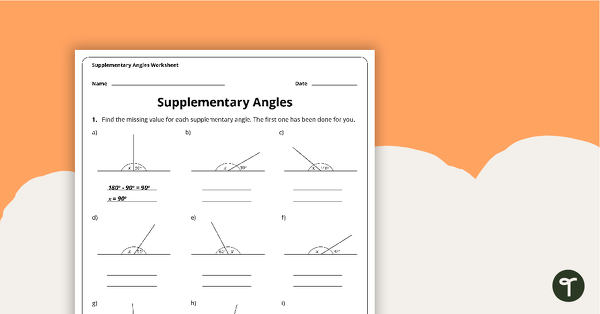
Teach your students to identify and calculate supplementary angles with this one-page maths worksheet.
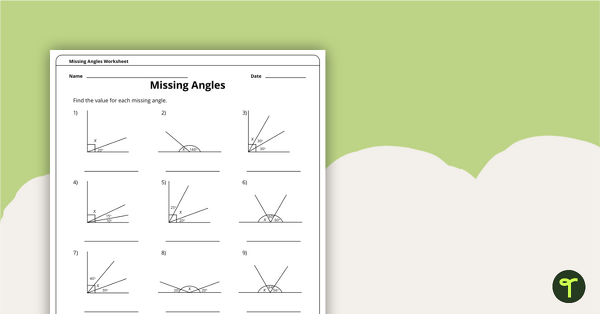
Download this missing angles worksheet to get your students calculating missing angles on right and straight angles.
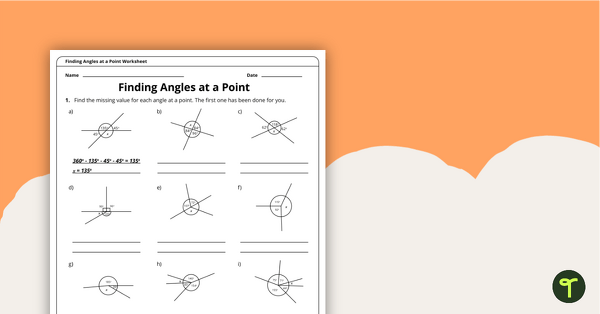
A worksheet to use when learning about finding angles at a point.
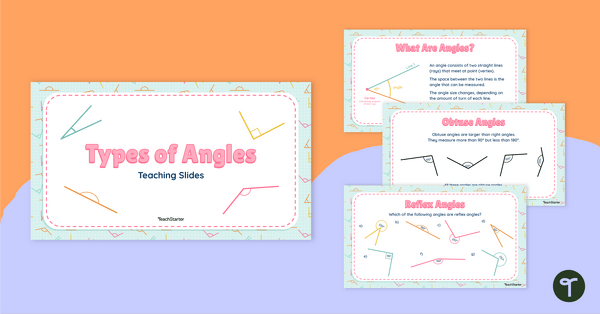
Teach your students about the six main angle types with this teaching presentation perfect for elementary school math lessons.
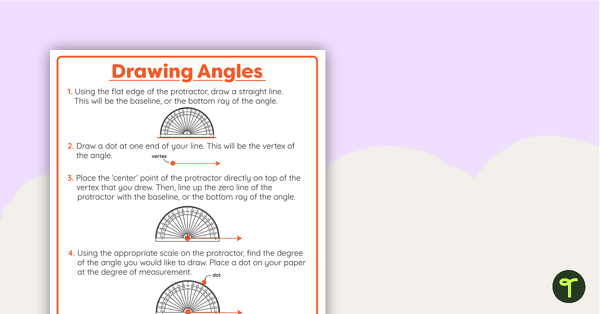
Remind your students how to draw angles using a protractor with this classroom anchor chart.

Create and classify different angles with this hands-on printable template.
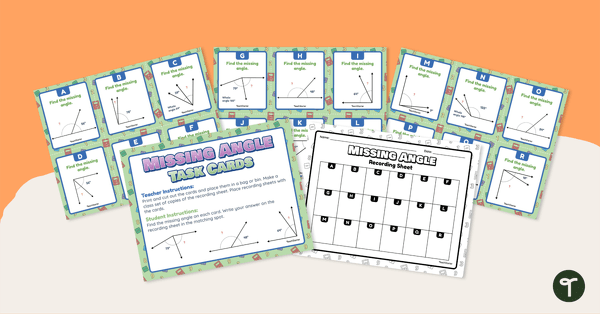
Practice how to find the measure of a missing angle with this set of 18 task cards.
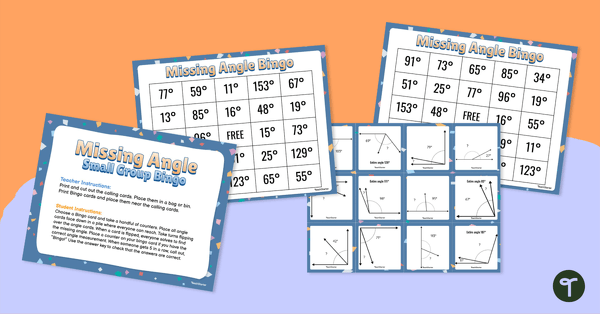
Practice how to find the measurement of a missing angle with this small group Bingo game.
0 Comments
Write a review to help other teachers and parents like yourself. If you'd like to request a change to this resource, or report an error, select the corresponding tab above.